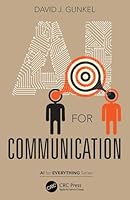
Convergence of Cloud with AI for Big Data Analytics: Foundations and Innovation
- Length: 448 pages
- Edition: 1
- Language: English
- Publisher: Wiley-Scrivener
- Publication Date: 2023-03-21
- ISBN-10: 1119904889
- ISBN-13: 9781119904885
- Sales Rank: #0 (See Top 100 Books)
CONVERGENCE of CLOUD with AI for BIG DATA ANALYTICS
This book covers the foundations and applications of cloud computing, AI, and Big Data and analyses their convergence for improved development and services.
The 17 chapters of the book masterfully and comprehensively cover the intertwining concepts of artificial intelligence, cloud computing, and big data, all of which have recently emerged as the next-generation paradigms. There has been rigorous growth in their applications and the hybrid blend of AI Cloud and IoT (Ambient-intelligence technology) also relies on input from wireless devices. Despite the multitude of applications and advancements, there are still some limitations and challenges to overcome, such as security, latency, energy consumption, service allocation, healthcare services, network lifetime, etc. Convergence of Cloud with AI for Big Data Analytics: Foundations and Innovation details all these technologies and how they are related to state-of-the-art applications, and provides a comprehensive overview for readers interested in advanced technologies, identifying the challenges, proposed solutions, as well as how to enhance the framework.
Audience
Researchers and post-graduate students in computing as well as engineers and practitioners in software engineering, electrical engineers, data analysts, and cyber security professionals.
Cover
Series Page
Title Page
Copyright Page
Preface
1 Integration of Artificial Intelligence, Big Data, and Cloud Computing with Internet of Things
1.1 Introduction
1.2 Roll of Artificial Intelligence, Big Data and Cloud Computing in IoT
1.3 Integration of Artificial Intelligence with the Internet of Things Devices
1.4 Integration of Big Data with the Internet of Things
1.5 Integration of Cloud Computing with the Internet of Things
1.6 Security of Internet of Things
1.7 Conclusion
References
2 Cloud Computing and Virtualization
2.1 Introduction to Cloud Computing
2.2 Virtualization
2.3 Conclusion
References
3 Time and Cost-Effective Multi-Objective Scheduling Technique for Cloud Computing Environment
3.1 Introduction
3.2 Literature Survey
3.3 Cloud Computing and Cloudlet Scheduling Problem
3.4 Problem Formulation
3.5 Cloudlet Scheduling Techniques
3.6 Cloudlet Scheduling Approach (CSA)
3.7 Simulation Results
3.8 Conclusion
References
4 Cloud-Based Architecture for Effective Surveillance and Diagnosis of COVID-19
4.1 Introduction
4.2 Related Work
4.3 Research Methodology
4.4 Survey Findings
4.5 Conclusion and Future Scope
References
5 Smart Agriculture Applications Using Cloud and IoT
5.1 Role of IoT and Cloud in Smart Agriculture
5.2 Applications of IoT and Cloud in Smart Agriculture
5.3 Security Challenges in Smart Agriculture
5.4 Open Research Challenges for IoT and Cloud in Smart Agriculture
5.5 Conclusion
References
6 Applications of Federated Learning in Computing Technologies
6.1 Introduction
6.2 Advantages of Federated Learning
6.3 Conclusion
References
7 Analyzing the Application of Edge Computing in Smart Healthcare
7.1 Internet of Things (IoT)
7.2 Edge Computing
7.3 Edge Computing and Real Time Analytics in Healthcare
7.4 Edge Computing Use Cases in Healthcare
7.5 Future of Healthcare and Edge Computing
7.6 Conclusion
References
8 Fog-IoT Assistance-Based Smart Agriculture Application
8.1 Introduction
Conclusion and Future Scope
References
9 Internet of Things in the Global Impacts of COVID-19
9.1 Introduction
9.2 COVID-19 – Misconceptions
9.3 Global Impacts of COVID-19 and Significant Contributions of IoT in Respective Domains to Counter the Pandemic
9.4 Conclusions
References
10 An Efficient Solar Energy Management Using IoT-Enabled Arduino-Based MPPT Techniques
10.1 Introduction
10.2 Impact of Irradiance on PV Efficiency
10.3 Design and Implementation
10.4 Result and Discussions
10.5 Conclusions
References
11 Axiomatic Analysis of Pre-Processing Methodologies Using Machine Learning in Text Mining
11.1 Introduction
11.2 Text Pre-Processing – Role and Characteristics
11.3 Modern Pre-Processing Methodologies and Their Scope
11.4 Text Stream and Role of Clustering in Social Text Stream
11.5 Social Text Stream Event Analysis
11.6 Embedding
11.7 Description of Twitter Text Stream
11.8 Experiment and Result
11.9 Applications of Machine Learning in IoT (Internet of Things)
11.10 Conclusion
References
12 APP-Based Agriculture Information System for Rural Farmers in India
12.1 Introduction
12.2 Motivation
12.3 Related Work
12.4 Proposed Methodology and Experimental Results Discussion
12.5 Conclusion and Future Work
References
13 SSAMH – A Systematic Survey on AI-Enabled Cyber Physical Systems in Healthcare
13.1 Introduction
13.2 The Architecture of Medical Cyber-Physical Systems
13.3 Artificial Intelligence-Driven Medical Devices
13.4 Certification and Regulation Issues
13.5 Big Data Platform for Medical Cyber-Physical Systems
13.6 The Emergence of New Trends in Medical Cyber-Physical Systems
13.7 Eminence Attributes and Challenges
13.8 High-Confidence Expansion of a Medical Cyber-Physical Expansion
13.9 Role of the Software Platform in the Interoperability of Medical Devices
13.10 Clinical Acceptable Decision Support Systems
13.11 Prevalent Attacks in the Medical Cyber-Physical Systems
13.12 A Suggested Framework for Medical Cyber-Physical System
13.13 Conclusion
References
14 ANN-Aware Methanol Detection Approach with CuO-Doped SnO2 in Gas Sensor
14.1 Introduction
14.2 Network Architectures
References
15 Detecting Heart Arrhythmias Using Deep Learning Algorithms
15.1 Introduction
15.2 Motivation
15.3 Literature Review
15.4 Proposed Approach
15.5 Experimental Results of Proposed Approach
15.6 Conclusion and Future Scope
References
16 Artificial Intelligence Approach for Signature Detection
16.1 Introduction
16.2 Literature Review
16.3 Problem Definition
16.4 Problem Definition
16.5 Result Analysis
16.6 Conclusion
References
17 Comparison of Various Classification Models Using Machine Learning to Predict Mobile Phones Price Range
17.1 Introduction
17.2 Materials and Methods
17.3 Application of the Model
17.4 Results and Comparison
17.5 Conclusion and Future Scope
References
Index
Also of Interest
End User License Agreement1. Disable the AdBlock plugin. Otherwise, you may not get any links.
2. Solve the CAPTCHA.
3. Click download link.
4. Lead to download server to download.





